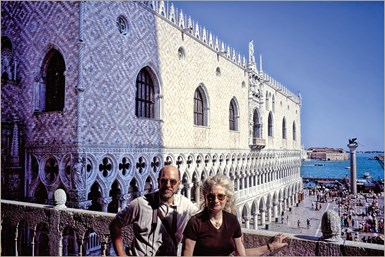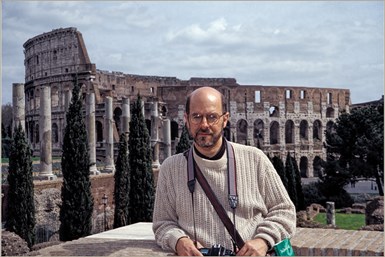49 Years at Plastics Technology, and How I Lived to Tell About It
I didn’t know it then, but a couple of lucky chances landed me a career at a single magazine. But there’s more to a satisfying work life than just work.
#customerfocus
Employee Spotlight Profile
Matthew Naitove, Executive Editor, Plastics Technology magazine
When I say I’m a magazine editor, and people ask, “What magazine?” and I tell them, Plastics Technology, I often get replies like:
Plastics?! Isn’t that the stuff that will poison you if you microwave it?
Isn’t that the stuff that’s killing sea turtles?
Isn’t that the stuff that will mess up your infant’s hormones if you don’t buy a ‘BPA-free’ baby bottle?
Isn’t that the stuff that’s killing the planet?
Forty-nine-plus years of working to help American industry be more productive, safer and more attractive to new workers, it comes down to this: I’m a planet-killer.
Obviously, I don’t see it that way. I could go on for some pages to explain why, but I’ll spare you — this time. I’ll bet few other GBM editors ever encounter such scrutiny about what they do for a living.
Perhaps it’s worth asking: What’s a nice guy like me doing in a racket like this?
If you caught my blog back in July (“I Didn’t See This Coming”) you’ll know I didn’t plan it this way. When I finished college with a degree in English Lit, I ran as far away from academics as I could get. I thought a year of journalism school might help me find a job where I could realize my ambition of writing for a living and also indulge my interests in science and technology. I answered a couple of classified ads in The New York Times, and when Plastics Technology answered, it seemed like a good place to start. I could get behind the scenes and see what turns the wheels of industry. And the name said “Technology” — so why not give it a try?
But this lucky break (as it turned out) most likely would never have happened if not for another fortunate coincidence. Before starting journalism school at Columbia University, I landed a summer job in a big New York public relations firm. One of my tasks was managing their extensive library of trade publications. I was astonished by the variety and specificity of these magazines: Street and Highway Lighting, Western City (for city managers — in the West), The Butcher Workman (an unabashedly socialist pub).
It was a vital piece of my education because Columbia Grad School of Journalism never hinted there was such a thing as the trade press (what we now more elegantly call “B2B”). For them, journalism was only about big city newspapers, network news, AP/UPI, or Time and Newsweek. Fortunately for me, I knew there were other options.
In the following 49 years, Plastics Technology was held by family-owned publishers (twice), private equity and a multinational publishing conglomerate. No question about it, family-owned is the only way to go. When I started out, there were as many as 14 plastics magazines in the U.S. (only four now). Most of the former competition was destroyed by the publishing corporations that owned them. I guess family-owned publishers generally try not to run their properties into the ground through mismanagement, inattention or indifference. Corporate publishers don’t seem to care. Let’s face it, B2B is not an easy niche, and few publishers have any idea of what to do with technical, industrially oriented editorial. At least, that’s my experience.

Matt and Christine in Venice.
Contrary to what you may have heard, I’m not just about work. My wife Christine has always been very tolerant of my being away from home or working late or on weekends when “it’s for work.” She’s always been very work-oriented herself, retiring after 40 years’ teaching high school history, art history and philosophy. I absorbed a lot of her curriculum by osmosis, as it were, particularly her AP Art History course, which has been like a second college education for me.
Her art history knowledge stood us in good stead as we traveled in Europe almost every summer since 1977. We’ve driven all over France, Italy, England, Spain, Portugal, Greece, Belgium and The Netherlands, with a bit of Switzerland and Croatia thrown in. She always knew the must-see art-historical sites — cathedrals, palaces, museums, ancient Greek and Roman monuments. We hardly needed a guidebook much of the time. For the last 15 years, we’ve settled on Venice for our annual outing. Very walkable, excellent public transportation by canal boats, quiet at night, and no chance of being run over by cars, scooters or bicycles. So not New York. We stay in the same hotel every time, and usually the same room in that hotel.
Each time we visit one of our favorite sights in Venice, I think, “Can I still enjoy seeing it for the umpteenth time?” And then when it’s in front of me, the sheer awesomeness erases any doubt. The only thing we’ve sacrificed by so many visits to Venice is the pleasure of getting lost, which is one of the signature experiences of that city.

Matt in Rome.
My job on our travels is driving, navigating on foot, paying the bills, and taking pictures. You can’t beat Venice for photogenicity. Everywhere you point your lens is a picture worth taking. Even the crowds of tourists often make good pictures. I have roughly 25,000 pictures of Venice from 27 visits. The first of those visits was in 1964, when as a 14-year-old, I was privileged to tag along with my grandmother, together with a cousin my age, on her first annual European getaway since her husband died two years before. For that trip, I was given my first real camera, a 35-mm SLR with in-camera metering but all-manual controls. About 10 cameras later, it’s still one of my favorites (in memory, at least). Before that, I had only a plastic Kodak “Brownie” point-and-shoot, but I was already experimenting with camera angles and oddball subject matter. I knew I wanted to do more.
Since the turn of the millennium, doing “more” has meant not only learning digital photography, but tackling digital photo editing. I will be forever grateful to my college freshman roommate for teaching me how to do black-and-white “wet” darkroom printing. But I don’t miss all those chemicals and the expensive photo paper (with silver-based emulsion) that provided the only way to enjoy your photos after snapping the shutter. Now, I’m a dedicated fan of photo-editing software — Photoshop, Lightroom, and a raft of plugins. I even shelled out for a few Adobe competitors’ software platforms, though I hardly use them. And I still get a kick out of making 8 x 10 in. prints on a fancy photo printer, despite costing about a buck a shot (ink included).
I whiled away the last two travel-restricted summers by sorting and cataloging my photos of previous trips. But besides vacation travel, I take loads of pictures for PT magazine, include dozens of cover photos. I see publicity photos come in with dubious quality, and I can’t restrain myself from Photoshopping them into a more satisfactory state. New “magic” software that seamlessly enlarges low-res photos is a huge boon in that department.
Okay, this is going on rather long, so let me tick off a few other Things About Me:
• Wine — my wife and I learned a lot on our European trips (but I wouldn’t attempt to match wits with Rick Jr. on that score).
• Food — I like cooking — learned that from my father, who was par with my mother in the kitchen.
• Music — All I can play is a turntable. I have a 6-ft shelf of vinyl records, mostly Sixties bands, from A-List to deeply obscure (back then, I was often attracted by the album covers). My first purchases were the Beach Boys and Jan and Dean (“Surf City.”)
• Movies & TV — I’ll watch almost anything (so unlike my wife, alas), but I have a reputation for being obsessed with the zombie genre. That’s so not fair — obsessed? I’d go with well-versed. If you’ve ever hung out with me at a restaurant or bar, you would know how totally exaggerated that claim of obsession is.
Need more information?
Matthew Naitove, Executive Editor
Plastics Technology magazine
a publication of Gardner Business Media, Inc.
200 West 79th St. 4N
New York, NY 10024
646-206-7022
Twitter
LinkedIn
About the Author
Matthew Naitove
Matt Naitove is Executive Editor of Plastics Technology magazine. Since he first joined the staff 49 years ago in 1972, he has held virtually every editorial title — including Chief Editor from 1981 to 2009 — and has covered every topic within the magazine’s editorial scope. He led the magazine to a Jesse H. Neal Editorial Achievement Award in 1980. Matt holds a bachelor’s degree from Harvard College (1971) and a master’s degree from Columbia Graduate School of Journalism (1972).
RELATED CONTENT
-
3 Major Trends in Manufacturing (And They All Begin with “A”)
Peter Zelinski, Editor-in-Chief of Additive Manufacturing and Modern Machine Shop, sees 3 big, major, long-term trends that continue to reshape manufacturing.
-
How Best-Practice Segmentation Delivers Faster and More Profitable Growth
There are many approaches to customer and market segmentation. The best method will depend on the business and its goals. This article explores 4 approaches to segmentation, 5 steps to create a successful customer segmentation model, 3 key data considerations, and 5 segmentation best practices. Note: Anyone in the Gardner community who uses GW17Lucky will receive a 17% discount on The Market and Customer Segmentation Workbook. It will only be good for this workbook and will be effective from February 20th through St. Patrick’s Day, March 17th, midnight central time. It will automatically expire at that time.
-
Brand vs. Product Advertising. What’s the Fuss?
Marketers have long debated the merits of brand vs. product advertising. In truth, there are reasons for both. The strategy depends on the marketing situation.


